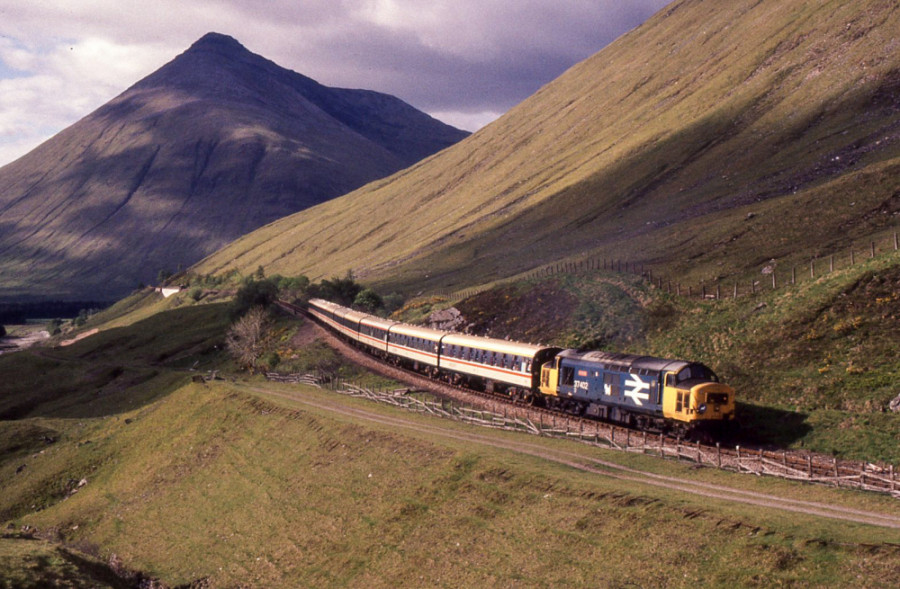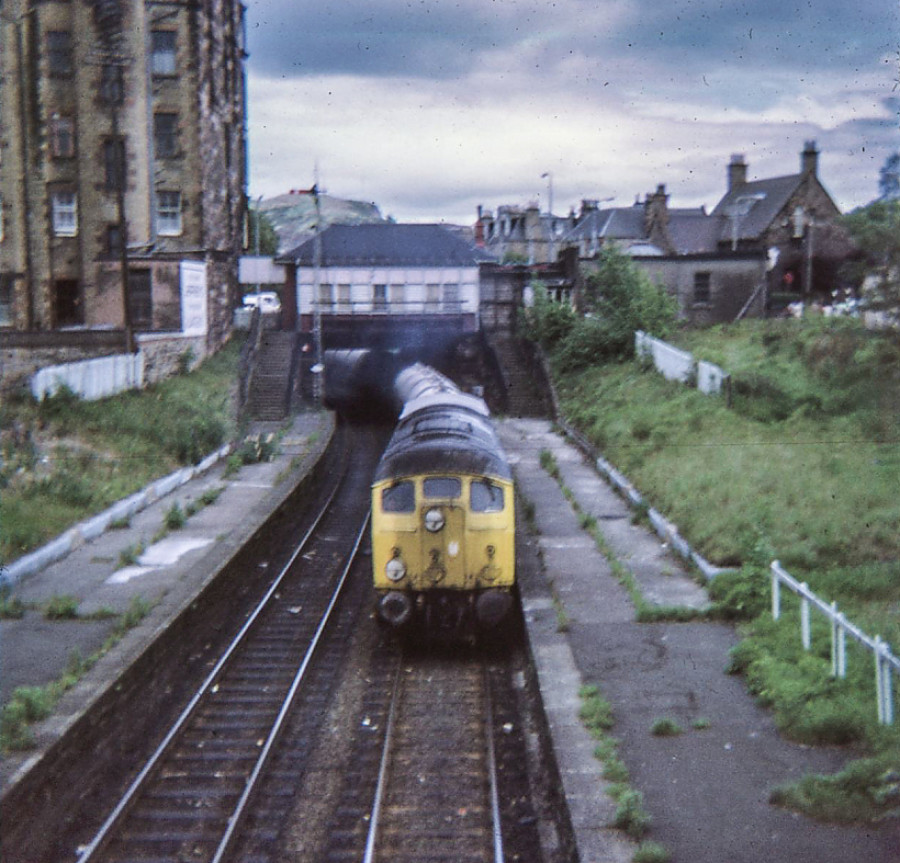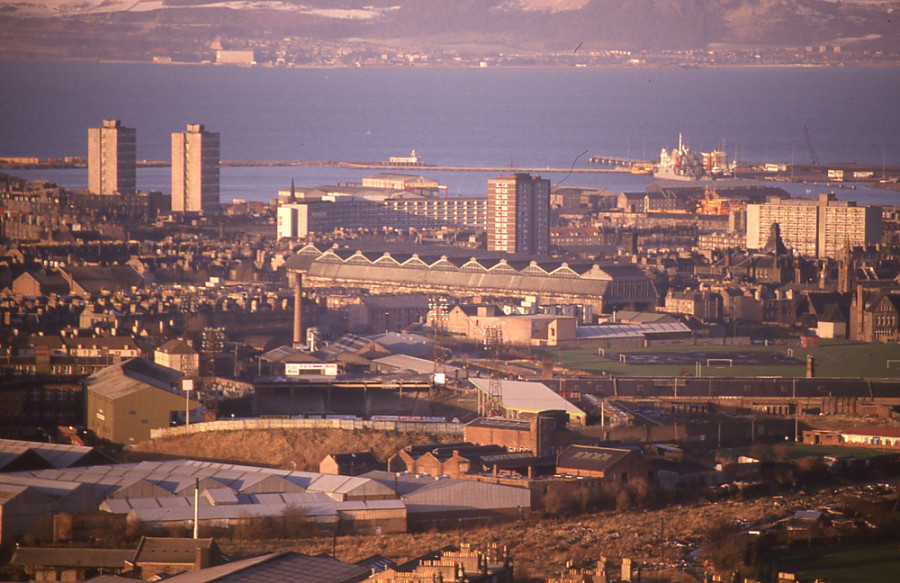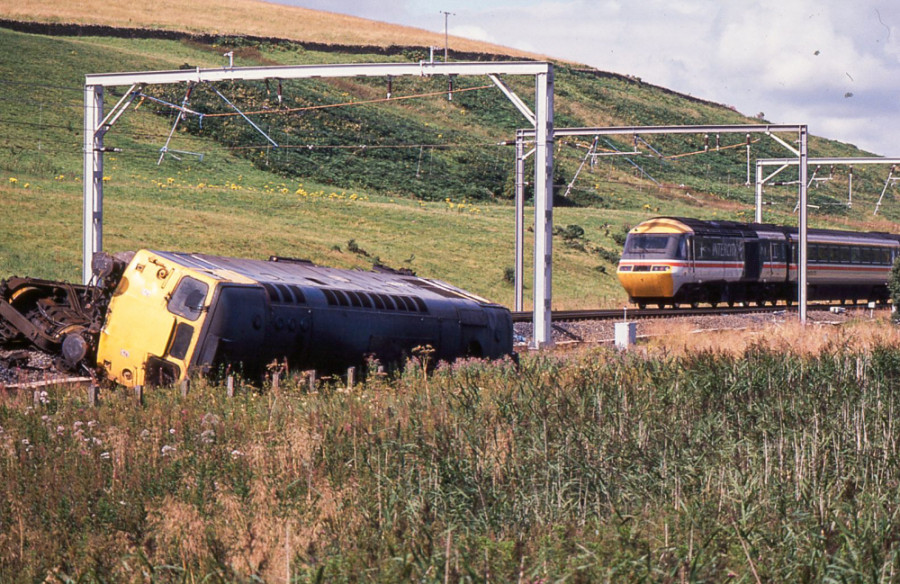The Scottish Railway Scene 1973-2020, a personal reflection
John Burnett Kirk
Review by Bill Roberton
County March Summit [West Highland]: This photograph is published in 'The Scottish Railway Scene 1973-2020' by John Kirk, published by Pen & Sword.
The inevitable class 37 hard at work on what I am sure was a charter given the livery of the coaches, climbs to County March summit having traversed Horseshoe Curve. The scenery in this part of the world is so spectacular, alas the weather is not always so pleasant. The loco is 37 402 which was named Oor Wullie in December 1985.
The photograph is courtesy of Pen & Sword.
John Kirk //
The title is very apt; the book being a personal journey across the Scottish - with diversions to Carlisle and Berwick-upon-Tweed - railway scene over the last fifty years. There are 152 pages divided into twelve chapters devoted to geographical areas with the last two covering preservation and steam on BR, both actively involved in by the author. Indeed, I first met John at Prestongrange in the late 1970s. See image 63420 to 'meet the author'.

Morningside Road: This photograph is published in 'The Scottish Railway Scene 1973-2020' by John Kirk, published by Pen & Sword.
It is the summer of 1973 and the Kodak Instamatic records a 'skinhead' class 24 reach Morningside Station on a cement train probably for Uddingston. Both platforms are still in place and the station buildings can be seen. Morningside Road’s signal 17, the Up home is also seen; note the two arms. This cement has just climbed from Newington, a stiff test for locomotives and in the early hours one morning a similar locomotive expired a couple of hundred yards east of this location and caught fire. I got up and went out to see what was going on. I found a row of very tired and dirty firefighters sitting on the kerbside having been inside the loco's engine room to fight the fire. I asked if there was anything I could do to help and was given the biggest teapot I have ever seen to be filled with boiling water to make a brew. It took two kettles and two pans of water to fill it. Having negotiated the engine room of a 24 at NYMR in engineman’s gear I hate to think how it must have been for the fire crew; pitch dark, wearing boots, yellow wet legs (that melted when you got them hot enough) heavy woollen tunics, breathing apparatus and those awkward shaped helmets! No wonder they were tired and in need of a brew!
The photograph is courtesy of Pen & Sword.
John Kirk //1973
After an Introduction giving a potted autobiography and a journey through the photographer's camera evolution, each chapter has a detailed history of the locomotives and units which served the Railway as well as the story of the lines themselves, many now vanished. This is further elaborated upon in the generous captions, enlivened with more personal memories. The author himself acknowledges the absence of recorded dates for most images but as I must confess to the same bad habit I couldn’t possibly comment …

Leith Central: This photograph is published in 'The Scottish Railway Scene 1973-2020' by John Kirk, published by Pen & Sword.
This picture is one that I didn’t realise that I had. It is taken from the north side of ‘Arthur’s Seat’ and looks out across the Forth to Fife. We can see some parts of Leith Docks where Ocean Terminal is now and where the Royal yacht Britannia is moored. In the foreground is Easter Road Stadium, home of Hibernian FC. The stadium has been completely rebuilt since this picture was taken and there used to be a station to allow fans to be taken by train almost directly there. However, the main feature of the picture and demonstrating the sheer size of the building is Leith Central Station. Quite why such a large station was thought necessary isn’t at all clear. It was never used to its capacity and when passenger services ceased it was used for coaching stock and then diesel multiple units and shunting locomotives as a depot, coded 64H. The station is long demolished, but this scene provides a fascinating look at the structure from a distance.
The photograph is courtesy of Pen & Sword.
John Kirk //
The photos are a broad and comprehensive coverage of the Railway Scene as it changed over the years, enlivened by anecdotes and opinions. Uncannily, many are similar to my own records, and as such add to the delight in reading this excellent book. My only criticism is mention of 'Sir' John Cameron, an honour richly deserved but not yet bestowed.

